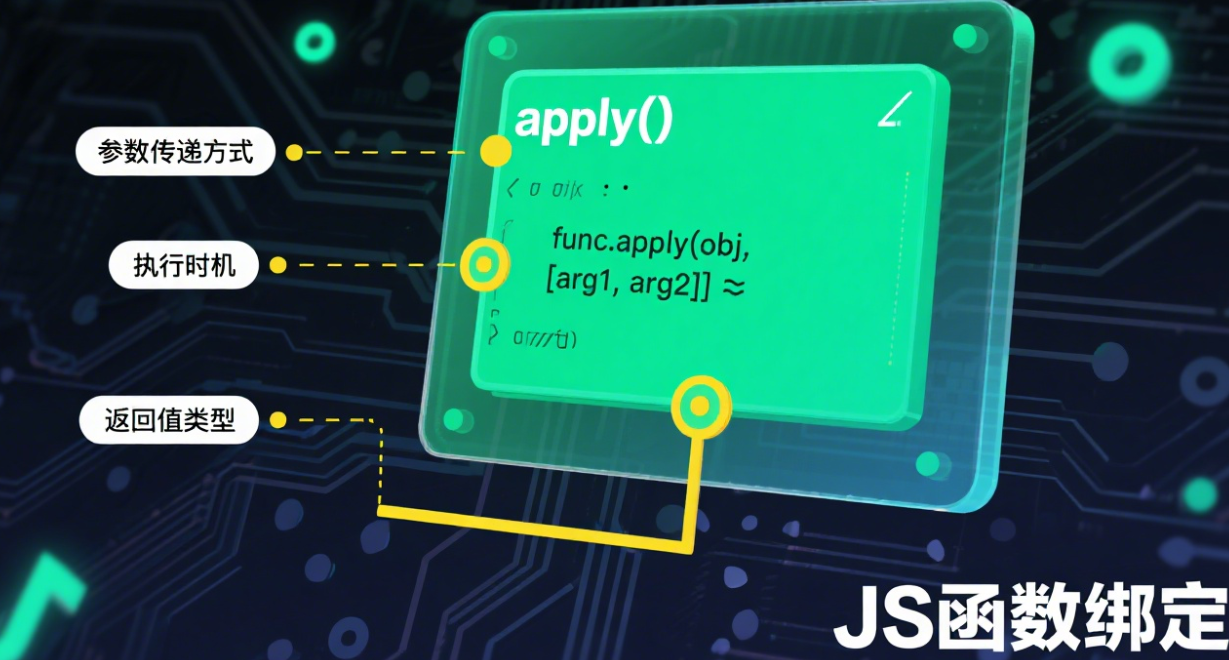文章目录
- 深入浅出:JavaScript 中的 call、apply 和 bind
- 一、三位魔法师的共同使命
- 二、各显神通的魔法师们
- 1. call - 即时通讯专家
- 2. apply - 批量处理高手
- 3. bind - 预约服务大师
- 三、魔法师们的对比表格
- 四、魔法师们的实际应用
- 1. 借用方法
- 2. 函数柯里化
- 3. 事件处理
- 五、注意事项
- 六、现代JavaScript的替代方案
- 结语

深入浅出:JavaScript 中的 call、apply 和 bind
在 JavaScript 的世界里,call、apply 和 bind 就像是三位各有所长的魔法师,他们都掌握着控制函数执行上下文(this)的魔法,但各有各的施法方式。本文将用生动形象的比喻和通俗易懂的语言,带你彻底理解这三个方法的联系与区别。
一、三位魔法师的共同使命
首先,我们需要明白这三位魔法师的共同目标:改变函数执行时的this指向。在 JavaScript 中,this的指向往往让人困惑,而这三位魔法师就是来解决这个问题的。
const wizard = {name: 'Merlin',castSpell: function() {console.log(`${this.name} casts a spell!`);}
};const muggle = { name: 'Harry' };// 三位魔法师都能让muggle施法
wizard.castSpell.call(muggle); // Harry casts a spell!
wizard.castSpell.apply(muggle); // Harry casts a spell!
const boundSpell = wizard.castSpell.bind(muggle);
boundSpell(); // Harry casts a spell!
二、各显神通的魔法师们
1. call - 即时通讯专家
call就像是即时通讯软件,特点是立即执行,而且参数要一个一个说清楚。
function introduce(greeting, punctuation) {console.log(`${greeting}, I'm ${this.name}${punctuation}`);
}const person = { name: 'Alice' };// 用call:立即执行,参数逐个传递
introduce.call(person, 'Hello', '!'); // Hello, I'm Alice!
特点总结:
- 立即执行函数
- 参数逐个传递
- 适合参数数量确定且较少的情况
2. apply - 批量处理高手
apply和call很像,但它更擅长处理批量数据,参数是通过数组传递的。
const numbers = [3, 10, 1, 5];// 用apply可以方便地处理数组参数
Math.max.apply(null, numbers); // 10// 等同于
Math.max(3, 10, 1, 5); // 10
特点总结:
- 立即执行函数
- 参数通过数组传递
- 适合参数数量不确定或较多的情况
3. bind - 预约服务大师
bind与前两位不同,它不立即执行函数,而是返回一个新的函数,你可以稍后调用它。
const flight = {airline: 'Air JS',book: function(flightNum, passenger) {console.log(`${passenger} booked ${this.airline} flight ${flightNum}`);}
};const bookFlight = flight.book.bind(flight, 'JS101');
bookFlight('John'); // John booked Air JS flight JS101
bookFlight('Mary'); // Mary booked Air JS flight JS101
特点总结:
- 不立即执行,返回新函数
- 可以预先绑定部分参数
- 适合需要多次调用的场景
三、魔法师们的对比表格
| 魔法师 | 执行时机 | 参数传递 | 返回值 | 典型应用场景 |
|---|---|---|---|---|
| call | 立即执行 | 逐个传递 | 函数返回值 | 明确知道参数个数时 |
| apply | 立即执行 | 数组传递 | 函数返回值 | 参数个数不确定时 |
| bind | 延迟执行 | 可部分绑定 | 新函数 | 需要多次调用相同this环境 |
四、魔法师们的实际应用
1. 借用方法
// 类数组对象借用数组方法
const arrayLike = { 0: 'a', 1: 'b', length: 2 };
Array.prototype.push.call(arrayLike, 'c');
console.log(arrayLike); // {0: 'a', 1: 'b', 2: 'c', length: 3}
2. 函数柯里化
// 使用bind实现函数柯里化
function multiply(a, b) {return a * b;
}const double = multiply.bind(null, 2);
console.log(double(5)); // 10
3. 事件处理
// 在事件处理中保持this指向
const button = document.querySelector('button');
const handler = {message: 'Button clicked!',handleClick: function() {console.log(this.message);}
};// 使用bind确保this正确指向handler
button.addEventListener('click', handler.handleClick.bind(handler));
五、注意事项
-
严格模式的影响:
'use strict'; function fn() { console.log(this); } fn.call(null); // null (非严格模式下是window) -
箭头函数的特殊性:
const fn = () => console.log(this); fn.call({name: 'obj'}); // 仍然指向定义时的this -
性能考虑:
bind会创建新函数,有一定内存开销- 在性能敏感的场景,可以考虑用
call或apply替代
六、现代JavaScript的替代方案
随着ES6的普及,有些场景可以用新特性替代:
// 用扩展运算符替代apply
const nums = [1, 2, 3];
Math.max(...nums); // 替代 Math.max.apply(null, nums)// 用箭头函数替代bind
const obj = {name: 'obj',fn: function() {setTimeout(() => {console.log(this.name); // 箭头函数自动绑定this}, 100);}
};
结语
call、apply和bind是JavaScript中控制this指向的三大神器。虽然现代JavaScript提供了箭头函数等新特性,但理解这三个方法仍然是掌握JavaScript核心概念的关键。记住:
- call - “立即执行,参数一个一个说”
- apply - “立即执行,参数打包成数组”
- bind - “先预约,稍后执行”
掌握了这三位魔法师的技巧,你就能在JavaScript的世界里更加游刃有余地控制函数的执行上下文了!








)






、数据标准化与归一化、特征降维】)



